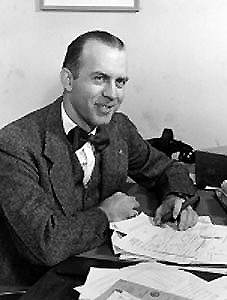Hartranft's noteworthy awards include:
Commendation for "Distinguished Service to Aviation" by Jimmy Doolittle in 1953 to observe the 50th anniversary of powered flight.
Award of Achievement, National Aviation Club, 1966.
Award of Commendation, National Intercollegiate Flying Association, 1969.
Honorary Life Membership, Royal Aero Club U.K., 1972.
Outstanding Contributions to Aviation, Aviation Council of Long Island, 1977.
Outstanding Contributions to Aviation, Alpha Eta Rho International Aviation Fraternity, 1978.
Honorary Doctorate Degree in Aviation Services, Embry-Riddle Aeronautical University, 1978.
Award of Commendation, Royal Aero Club of the Netherlands, 1979.
Elder Statesman of Aviation, National Aeronautic Association, 1986.
Charles Lindbergh Diploma, Federation Aeronautique Internationale, 1987.
Mr. J. B. "Doc" Hartranft, the first AOPA president. (AOPA)
(From a press release by IAOPA - International Council of Aircraft Owner and Pilot Associations - European Region - February 25, 2002)
